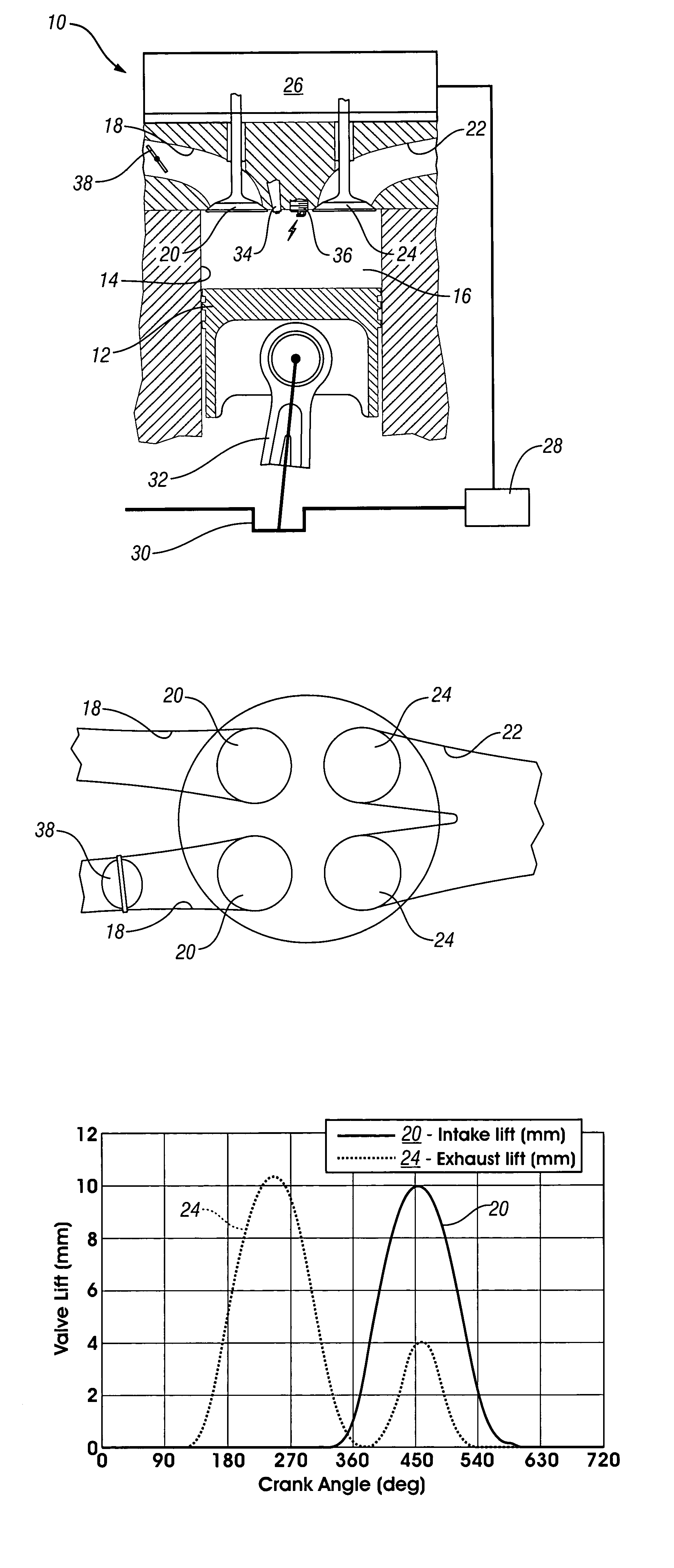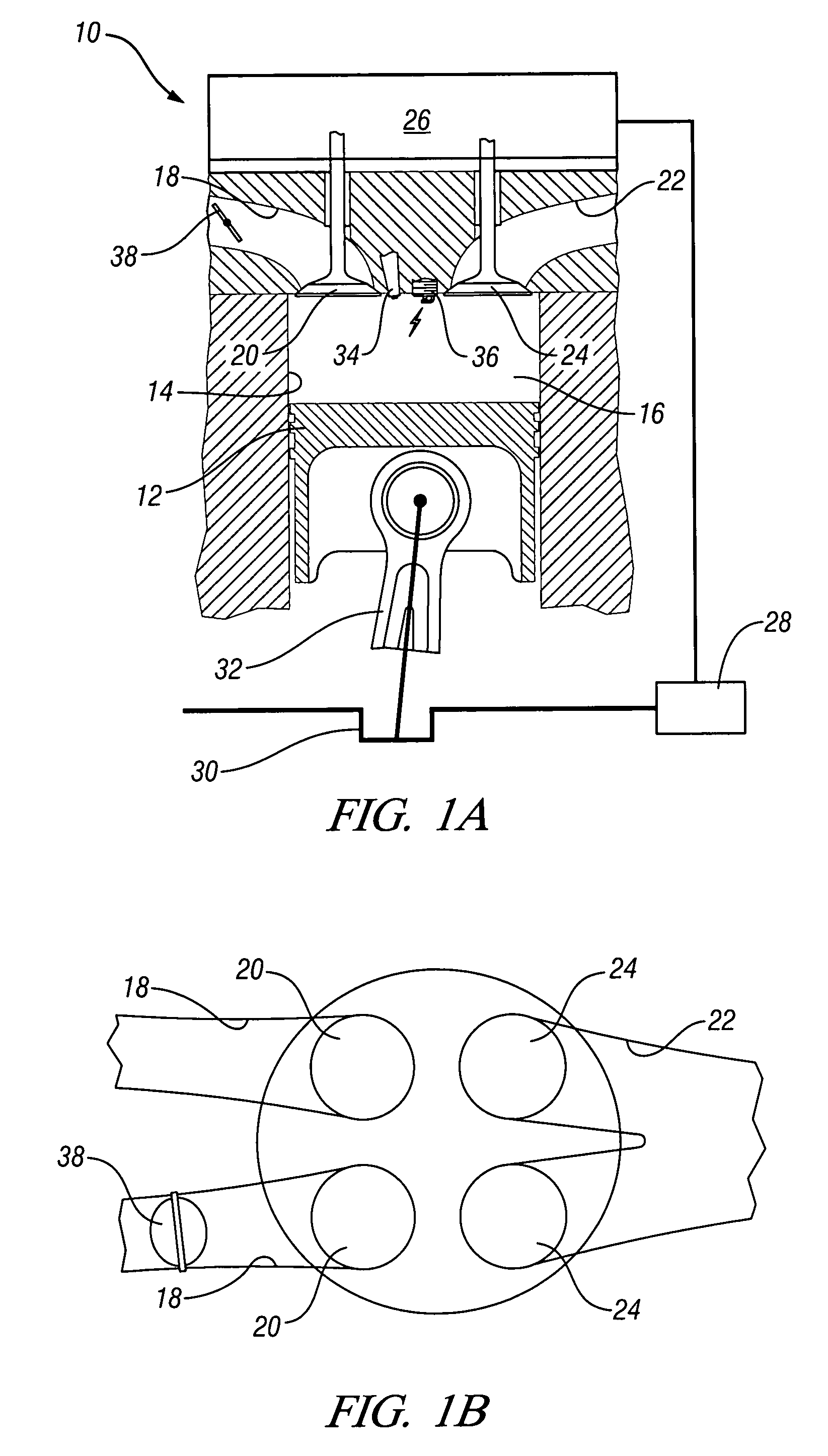Method for mid load operation of auto-ignition combustion
a technology of auto-ignition combustion and mid-load range, which is applied in the direction of engine starters, electric control, instruments, etc., can solve the problems of retarded and slow hcci combustion, low mixture temperature, etc., and achieve the effect of decreasing the setting of the flow control valve, reducing the peak burning rate, and increasing the duration of the bum
- Summary
- Abstract
- Description
- Claims
- Application Information
AI Technical Summary
Benefits of technology
Problems solved by technology
Method used
Image
Examples
Embodiment Construction
[0031]For simplicity, the following description will address the present invention in its application to a single cylinder direct-injection gasoline four-stroke internal combustion engine, although it should be appreciated that the present invention is equally applicable to a multi-cylinder direct-injection or port-fuel-injected gasoline four-stroke internal combustion engine.
[0032]A schematic representation of an embodiment of the present invention is a single-cylinder direct-injection four-stroke internal combustion engine 10 shown in FIG. 1A. In the Figure, a piston 12 is movable in a cylinder 14 and defines with the cylinder 14 a variable volume combustion chamber 16. An intake passage 18 supplies air into the combustion chamber 16. Flow of air into the combustion chamber 16 is controlled by intake valve 20. Combusted gases can flow from the combustion chamber 16 via an exhaust passage 22 and flow of combusted gases through the exhaust passage 22 is controlled by exhaust valve 2...
PUM
 Login to View More
Login to View More Abstract
Description
Claims
Application Information
 Login to View More
Login to View More - R&D
- Intellectual Property
- Life Sciences
- Materials
- Tech Scout
- Unparalleled Data Quality
- Higher Quality Content
- 60% Fewer Hallucinations
Browse by: Latest US Patents, China's latest patents, Technical Efficacy Thesaurus, Application Domain, Technology Topic, Popular Technical Reports.
© 2025 PatSnap. All rights reserved.Legal|Privacy policy|Modern Slavery Act Transparency Statement|Sitemap|About US| Contact US: help@patsnap.com



